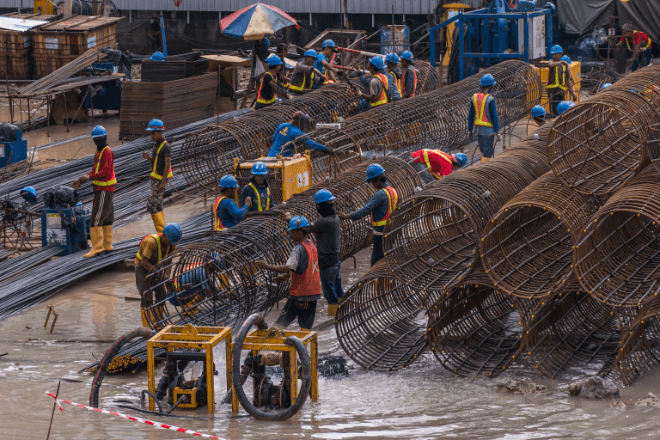
The coronavirus disease (COVID-19) pandemic continues to drag down economic growth in Southeast Asia as measures to contain the virus curbed economic activity.
Growth forecast for the region for 2020 has been revised down to -4.4% from -3.8% in September, according to a report released by the Asian Development Bank (ADB) on Thursday.
Outlook for 2021 has also been cut to 5.2% from the 5.5% growth forecast in September.
The new growth forecast, was presented in a regular supplement to the Asian Development Outlook (ADO) 2020 Update.
In the wider developing Asia, the report noted a slight pickup in economic activity, with the region projected to contract by 0.4% this year, an improvement from the -0.7% gross domestic product (GDP) growth forecast in September. Developing Asia refers to the 46 developing members of ADB.
The outlook for 2021 remains unchanged, with developing Asia expected to rebound by 6.8% as countries move toward recovery.
“The outlook for developing Asia is showing improvement. Growth projections have been upgraded for the People’s Republic of China (PRC) and India, the region’s two largest economies,” said ADB Chief Economist Yasuyuki Sawada in a press release. “A prolonged pandemic remains the primary risk, but recent developments on the vaccine front are tempering this. Safe, effective, and timely vaccine delivery in developing economies will be critical to support the reopening of economies and the recovery of growth in the region.”
The report notes that virus containment remains relatively stringent in Central, South, and Southeast Asia, where outbreaks have continued in some economies and reemerged in others. In subregions still dealing with serious outbreaks, domestic mobility remains below normal—by about 10% in South Asia and 20% in Central and Southeast Asia.
Country forecasts
GDP forecasts in 2020 are downgraded for Indonesia, Malaysia, and the Philippines as COVID-19 containment hampers economic recovery. Meanwhile, success in reopening economies points to better growth prospects for Brunei Darussalam, Thailand, and Viet Nam.
Forecasts are unchanged for Cambodia, the Lao People’s Democratic Republic, Myanmar, Singapore, and Timor-Leste.
The Indonesian economy shrank by 3.5% in the third quarter, deepening contraction in the first three quarters of 2020 to 2.0%. With continued weakness, GDP is forecast to contract by 2.2% in 2020 before returning to growth in 2021, at 4.5%.
Weighed down by travel restrictions and lower external demand, Malaysia’s GDP is projected to fall by 6.0% this year before bouncing back by 7.0% in 2021.
GDP forecast for the Philippines for 2020 is downgraded to 8.5% contraction with household consumption and investment falling more than expected. The forecast for 2021 is maintained at 6.5% growth, assuming that public investment picks up and the global economy recovers.
Singapore’s GDP forecast is maintained at –6.2% in 2020 but revised up to 5.1% in 2021 with further recovery expected in manufacturing, construction, and the external sector.
Thailand contracted by 6.4% in the third quarter of 2020, but this almost halved a 12.1% decline in the second quarter. The forecast for 2020 is adjusted up slightly from 8.0% contraction to 7.8%, but the growth forecast for 2021 is revised down from 4.5% to 4.0%.
In Viet Nam, the growth forecast for 2020 is revised up from 1.8% to 2.3% on accelerated public investment, revived domestic consumption, trade expansion, and rapid recovery in the PRC. The growth forecast for 2021 is revised down to 6.1%.
ADO is ADB’s annual flagship economic publication and is published every April, with an Update published in September and brief supplements published normally in July and December.

